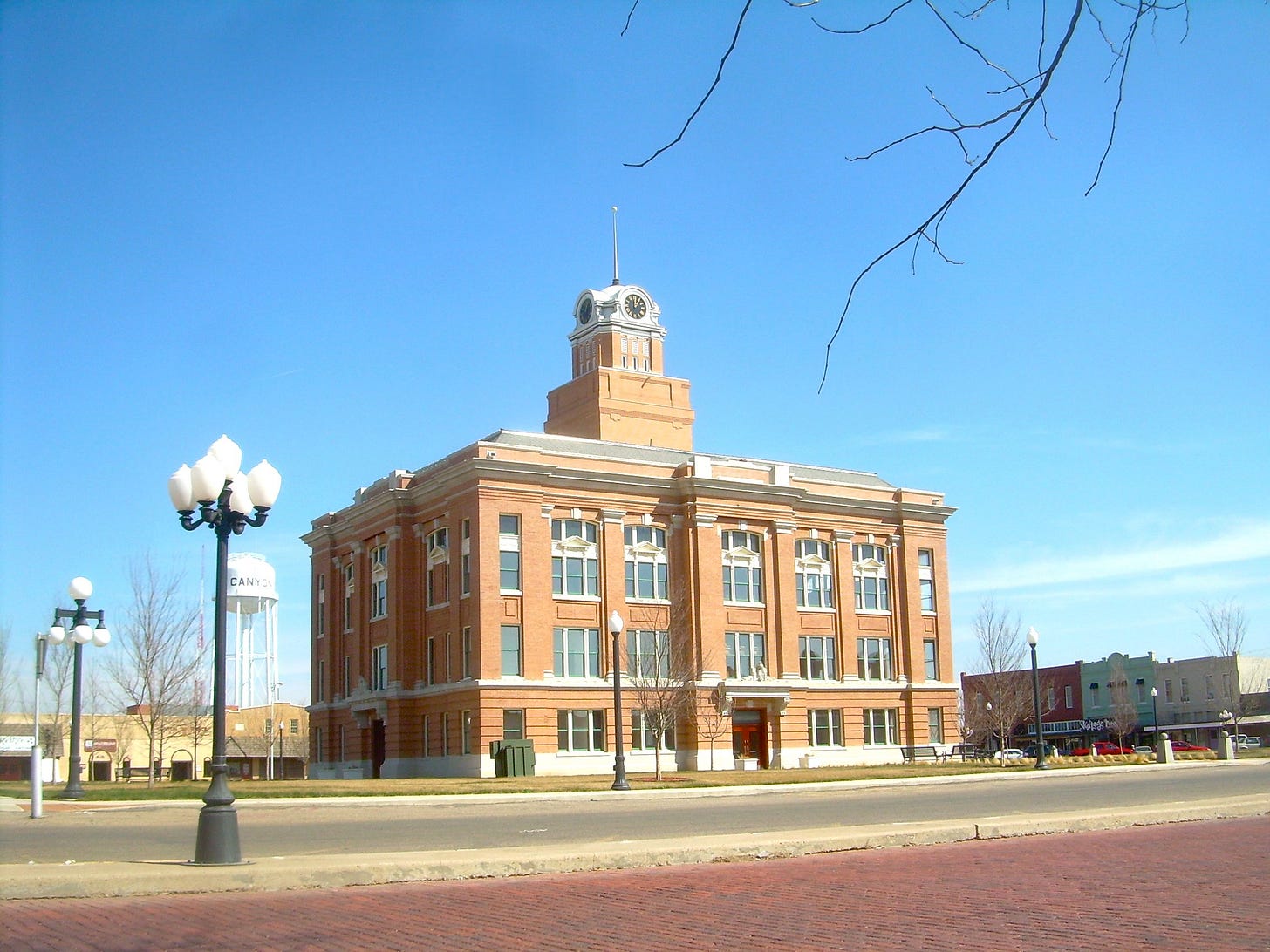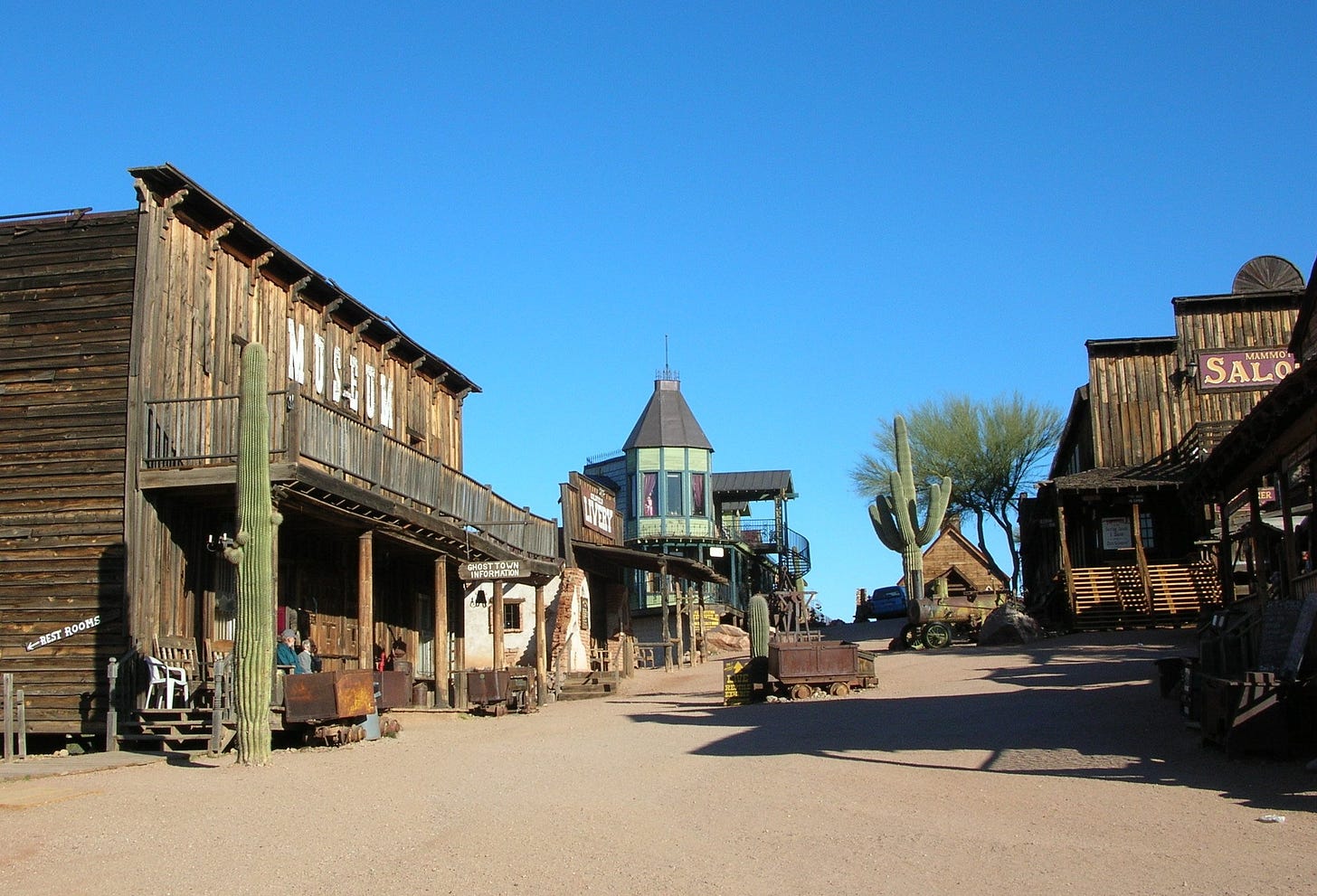PLACEMAKING | The Vibrancy of Cowboy Urbanism
Why good urbanism can exist anywhere.

Written By Vaneesha Patel
It's often presumed urbanism is a big-city affair, contained to coastal and other long-industrialized metropolises. In truth, we can find prime examples of urbanism all across the country. In the South, one type could be called “Cowboy Urbanism.” While it may look different from the prototypical urban environment, Cowboy Urbanism exists everywhere from downtowns to theme parks. At the crossroads between the South’s unique history and its geography, the cornerstone of Cowboy Urbanism is a strong reverence for place.
Here are a few ways that Cowboy Urbanism manifests itself:
Downtown Squares
The Texas Panhandle is home to a large number of small towns containing lively Main Streets and, most notably, bustling downtown squares. Canyon, Texas, has a robust downtown square that is home to a variety of shops and restaurants. In the very center, you can find the Randall County Courthouse (above), which serves as a monument for the town to gather around. On a normal day, you might find cars parked throughout the square, but on several occasions (such as Canyon’s renowned 4th of July Fair on the Square), the area is turned into a pedestrian-friendly oasis. The existence of a downtown square with a courthouse in the center is not unique to Canyon but can actually be found in several other Texas towns. From Waxahachie to Mason, these downtown squares are a visible example of Cowboy Urbanism and help signal to visitors that they are out West.
Novelty Amusements
Cowboy Urbanism is also prevalent in more recreational and novelty-style development. Theme parks, tourist attractions, and sightseeing stops found not only in the South but also throughout the US often portray Cowboy Urbanism through Western-themed buildings. From the Goldfield Ghost Town in Arizona (below) to Frontier City in Oklahoma to Disney’s Frontierland in both Florida and California, the setting is reminiscent of traditional Western Main Streets, marked by different uses as well as cohesive aesthetics and form. People pay to visit these places not only to enjoy the rides but also to enjoy the experience of being surrounded by old-time “Western” buildings.
Renewable Energy
While more difficult to see, the South's production of and reliance on renewable energy is also a form of Cowboy Urbanism. Texas is the leading producer of wind energy and the largest nuclear power plant is located in the Phoenix Valley. The unique geography of the region lends itself to producing renewable energy, which can also be seen in miles of windmills located throughout the Texas Panhandle. Thanks to the South’s unique geographic characteristics and the layout of its cities, the region’s ties to and use of renewable energy differ from other parts of the US and contribute to sustainable development.
While town squares, Western theme parks, and windmills may not match the perception of urbanism associated with cities on the East or West coasts, the style and aesthetics of Cowboy Urbanism fulfill the purpose and utility of any type of urbanism—to promote a better quality of life for all. They were just developed within the context of the South’s unique history and geography.
As we look for examples of good urbanism, we should remember that the concept is versatile and does not have to match any particular style or aesthetic. After all, when you see Cowboy Urbanist environments yourself, you can’t help but experience the nostalgia and emotional pull of these places as the past and present combine. They still draw people in and add to quality of life—just in ways that are vehemently tied to the culture of a certain place.

Vaneesha Patel is the Spring 2023 Mencken Publishing Fellow on Urban Development.
